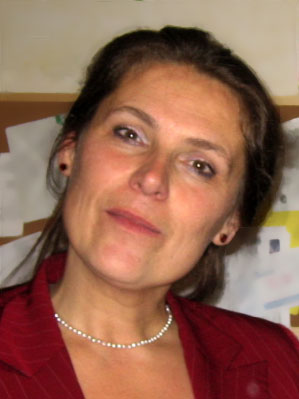CHILDES Dutch-French DeHouwer/Bornstein Corpus

|
Annick De Houwer Director Harmonious Bilingualism Network (HaBilNet) annick.dehouwer@habilnet.org website |

|
Marc Bornstein Child Health and Human Development National Institutes of Health marc.h.bornstein@gmail.com website |
| Participants: | 33 |
| Type of Study: | naturalistic |
| Location: | Belgium |
| Media type: | video |
| DOI: | doi:10.21415/3HTM-0F63 |
Browsable transcripts
Download transcripts
Media folder
Citation information
Media folder
Citation information
De Houwer, A. (2014). The absolute frequency of maternal input to bilingual and monolingual children: a first comparison. In T. Grüter & J. Paradis (eds.), Input and Experience in Bilingual Development, Amsterdam, the Netherlands: John Benjamins, 37-58.
De Houwer, A., & Bornstein, M. H. (2016). Bilingual mothers' language choice in child-directed speech: Continuity and change. Journal of Multicultural and Multilingual Development, 37(7): 680-693. doi: 10.1080/01434632.2015.1127929
In accordance with TalkBank rules, any use of data from this corpus must be accompanied by at least one of the above references.
Project Description
These data are from the project TaalSpel or Language Play. They were collected in Belgium by Annick De Houwer in cooperation with Marc H. Bornstein These data are being jointly donated by Annick De Houwer & Marc H. Bornstein; the transcripts are owned by and donated by Annick De Houwer.Recordings are from the same children at 13 and 20 months in two settings at home -- freeplay sessions with a standardized set of toys and eating. Filmers were silent. Children include 31 Dutch monolinguals, 31 Dutch-French bilinguals, and 3 Dutch-English bilinguals. The IDS for the three Dutch-English bilinguals are E01, E02, and E03. The video at 13 months includes two 15-minute sessions, one with food and one with play with MOT. At 20 months, the video includes three contexts: FOOD + LEARN (play with MOT with standardized set of toys) + PLAY (CHI alone, with same standardized set of toys, done after LEARN session), 3 x 10 minutes, toddler + mother, recorded at home, filmer silent (FOOD filmed either before LEARN+PLAY, or after; LEARN filmed before PLAY). Note that what is called play.mlu in the 20M coded transcripts actually refers to the videos called LEARN (so, in interaction with MOT). Five minutes of each interactional context were transcribed and coded at each age for 20 minutes for each child in total.
The data for the monolinguals is in the /DutchAfrikaans section of CHILDES. For the bilinguals, some sessions are in Dutch, others in French, one in English. All recordings of monolingual families are in Dutch.
Transcripts are organized according to (1) main language used (NL, FR, ENG) and (2) kind of family (bilingual/monolingual) and (3) context (food/play).